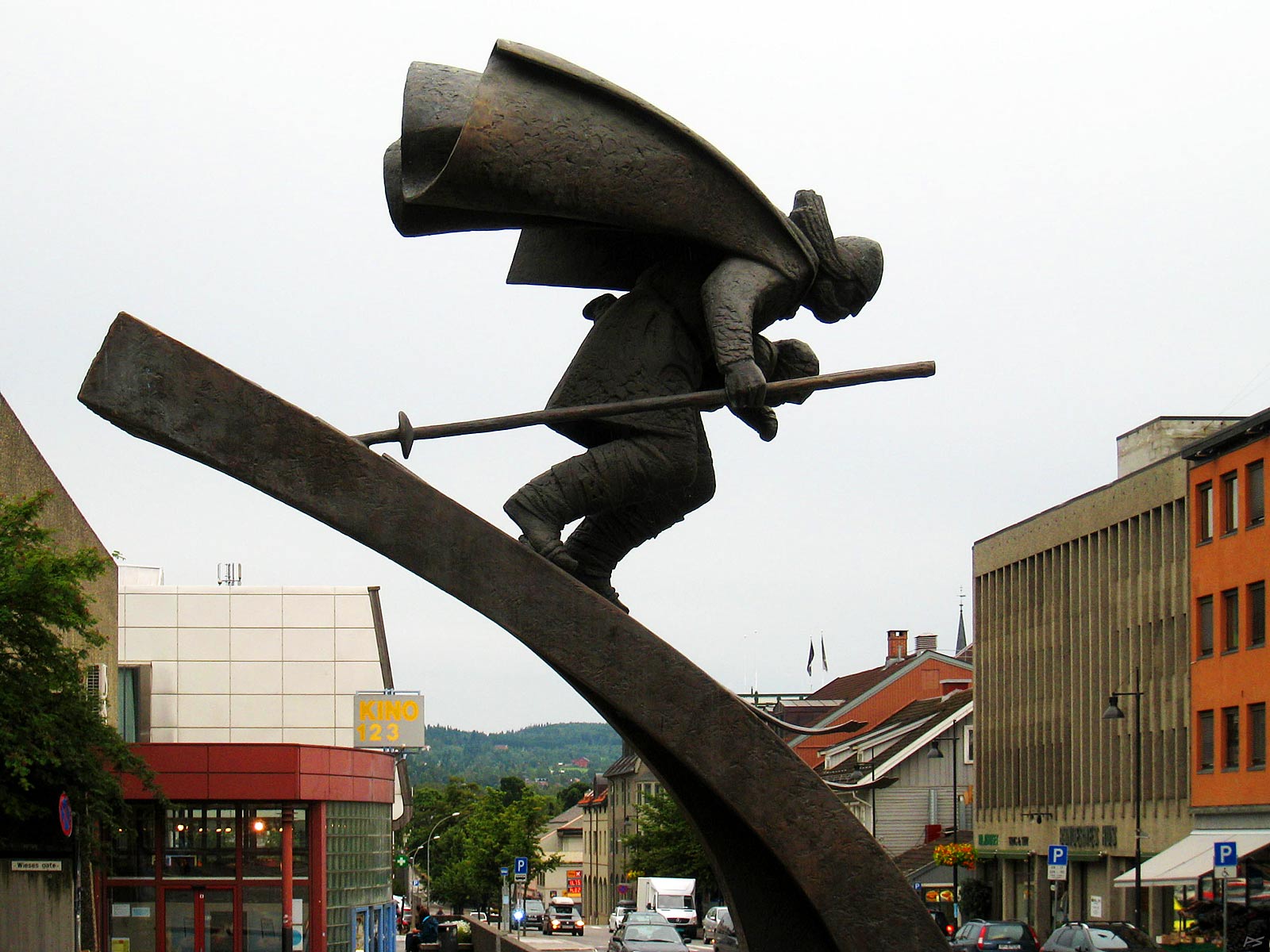
"Birkebeinere" (1992), a sculpture in the city of Lillehammer by Sivert Donali (1931–2010): The two years old future king Håkon Håkonson being carried across the mountains the winter of 1206.
(2012-08-06)
During the years approximately 1130–1240 there was a civil war between the Birkebeiner group on one side and the Bagler and other groups. Sverre Sigurdson, king 1177–1202, was sanctioned by the Birkebeiner group. When he died his son Håkon Sverresson became king, but Håkon died after two years. The same year Håkon's illegitimate son Håkon Håkonson was born and later the Birkebeiner group accepted him as a heir to the throne. However, mother and son lived in Bagler country in the south, and in 1206 the mother fled with her son toward safety in the Birkebeiner "capital" Nidaros (now Trondheim). As a part of that escape two skiers carried the child from Lillehammer across the mountains. When Inge Bårdson, king since 1204, died in 1217, Håkon Håkonson was elected king 13 years old. Later he became a strong king, obtaining peace in the county and reigning until his death in 1263. (In 1262 he also became the king of Iceland, in order to stop the feuds there.)
Carrying the royal child across the mountains has been commemorated every winter since 1932 by a 54 kilometre cross country skiing contest north of Lillehammer. Now there is also a corresponding mountain bike race and a running race. The cross country skiing race has been copied in USA, Canada and Australia.
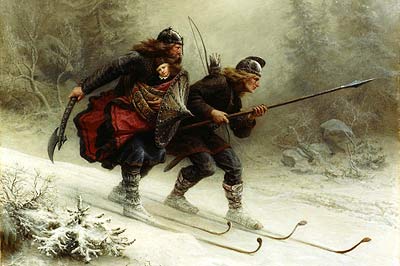
The first artistic tribute to the 1206 achievement was "Birkebeinerne" (1869), a painting by Knud Bergslien (1827–1908)
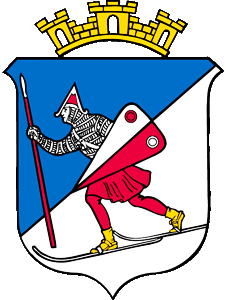
Lillehammer coat of arms
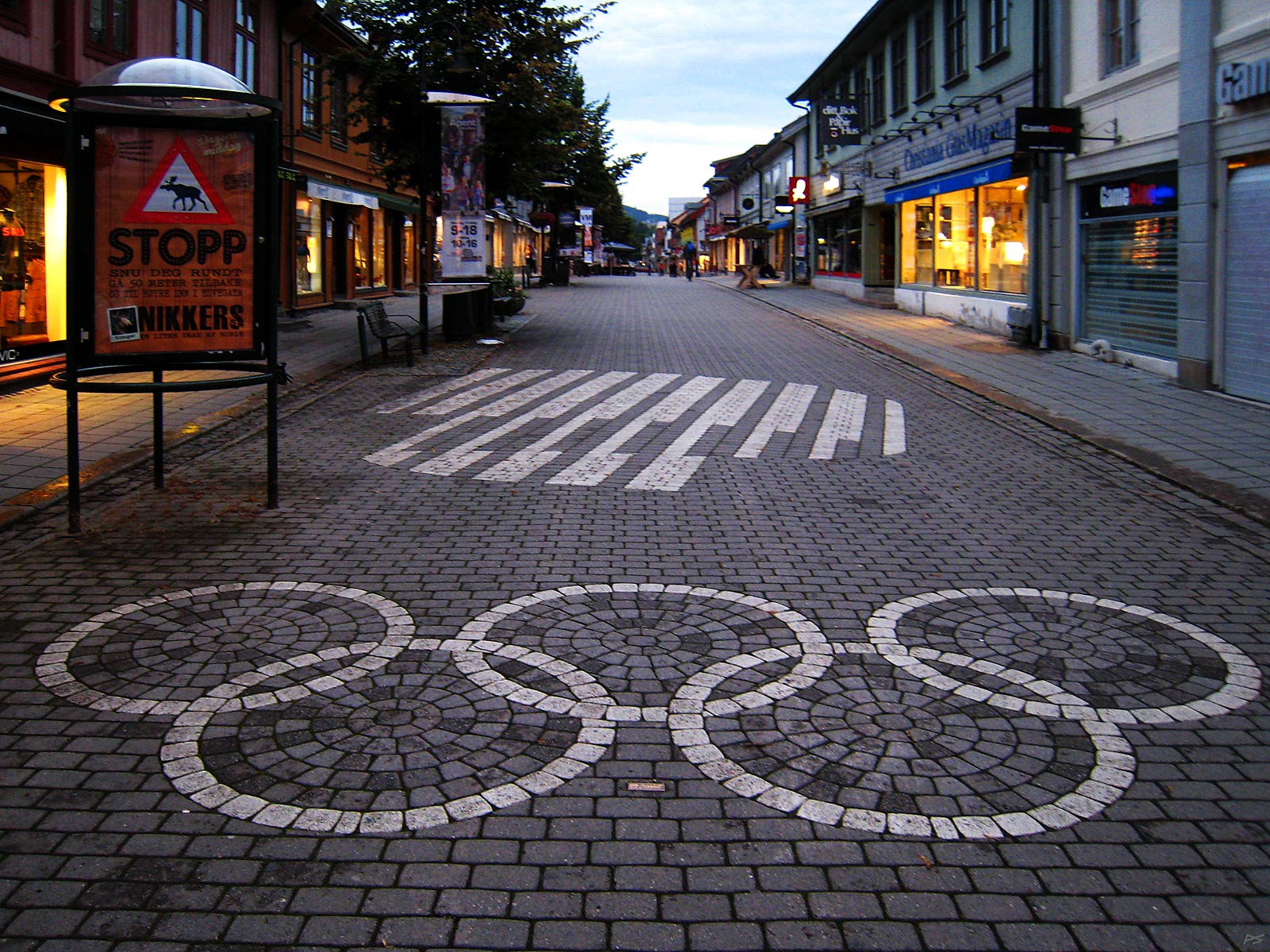
Lillehammer was the host of the 1994 Winter Olympics, "the best Olympic Winter Games ever" as concluded by the IOC president Juan Antonio Samaranch. If you visit Lillehammer you'll definitely be reminded of it. This is a late evening picture of the pedestrian street
(2012-08-06)
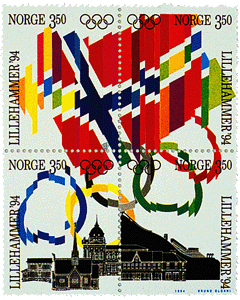
Olympic postal art 1994
